Walls Tell Stories - 1 Class 5 Worksheet EVS Chapter 10
Q1: Multiple Choice Questions
(i) Where is the Golconda fort located?(a) Delhi
(b) Mumbai
(c) Hyderabad
(d) Kolkata
 Golconda fort
Golconda fort(ii) What was the function of the sharp iron spokes on the gate?
(a) One could climb the gate in case of emergency.
(b) They made the gate look beautiful.
(c) They made gate stick to the walls.
(d) Elephants of the enemy hurt themselves if they tried to open it by butting their heads on it.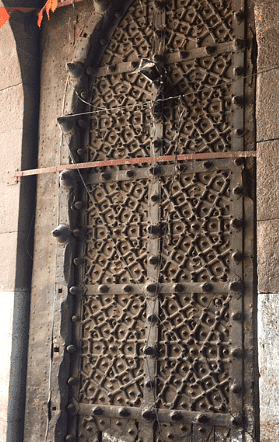 Gate of the fort
Gate of the fort
(iii) Why were the bastions made in the fort wall?
(a) To make the fort look beautiful.
(b) To keep an eye on the movement of the enemy at a distance and in different directions.
(c) For the king to rest while taking a round of the fort.
(d) They acted as the servant quarters.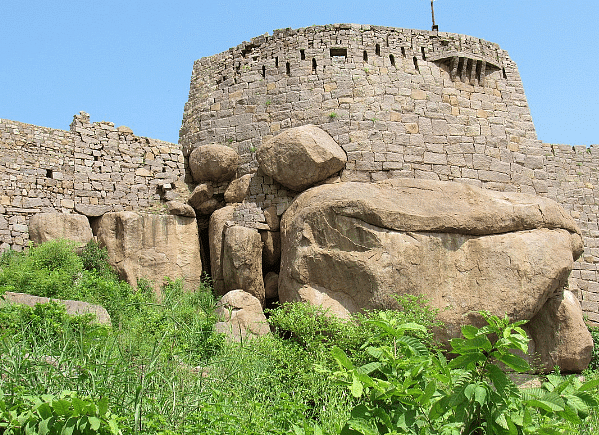 Bastions in the fort wall
Bastions in the fort wall
(iv) Why were big holes made in the bastions?
(a) To attack the enemy without being seen
(b) To get fresh air
(c) To escape through them
(d) For the king to enjoy the scenery around the fort.
(v) What is the use of the toothed wheel in the picture?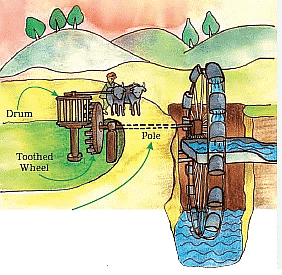 (a) To make the work of the bullocks easier.
(a) To make the work of the bullocks easier.
(b) To lift the water from the well.
(c) To change the direction of movement.
(d) To pull the water to a greater height.
Q2: Fill in the Blanks
(i) The walls of the Golconda fort are very ____________.
 Cannon
Cannon
(ii) The Golconda fort is very ____________.
(iii) The outer wall of the fort has ____________ bastions.
(iv) The fort was made in ____________.
(v) The walls of the fort have beautiful ____________.
Q3: Match the Following.
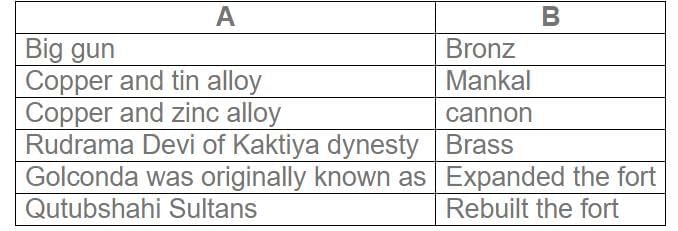
Q4: True and False
(i) Golconda Fort has very thin walls.
(ii) There are many palaces inside the fort.
(iii) A cannon is a big gun.
(iv) The fort had metalled pipes to carry water to different places in the palace.
(v) Mashak is a leather bag used for carrying water.
Q5: Using the clues below guess the word.
(i) A subject in which we study about past. H _ _ _ _ R _
(ii) A part of the wall coming out in a round shape. It is built to ensure security. B _ _ T _ _ _
(iii) A single of this can cause a lot of destruction. B _ _ _
(iv) A place where old items are kept. M _ _ _ _ M
(v) There were beautiful B_r_ on the walls of Golconda Fort.
 Golconda fort
Golconda fort
Q6: Short Answer Type Questions
(i) Which sultans lived in Golconda fort?
(ii) What does the map of Golconda fort indicate?
(iii) Why is a deep ditch dug along the walls of the fort?
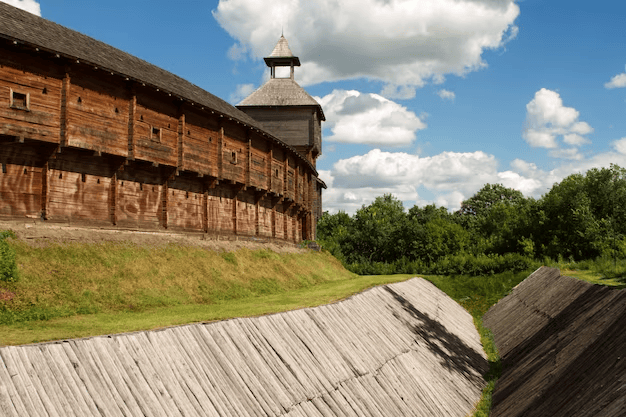 Example of deep ditch and fort
Example of deep ditch and fort
(iv) How far is Fateh Darwaza from Mahal Taramati?
(v) In which direction would the ‘toothed wheel’ move?
Q7: Long Answer Type Questions
(i) What tricks did emperors play to make smaller kingdoms a part of their own kingdom?
(ii) What do you come to know through the things kept in a museum?
(iii) Name the things that ensured the security of the fort.
(iv) What is a bastion (burj)? What are they made for? How many bastions are there in Golconda fort?
(v) How would the soldiers find peeping from the holes in the bastions useful while attacking?
You can find Worksheets Solutions here: Worksheet Solutions: Walls Tell Stories - 1
|
53 videos|388 docs|51 tests
|
FAQs on Walls Tell Stories - 1 Class 5 Worksheet EVS Chapter 10
| 1. What does the title "Walls Tell Stories" mean? |  |
| 2. How can walls reflect the culture of a place? |  |
| 3. What types of stories can walls tell? |  |
| 4. Why is it important to preserve walls with historical significance? |  |
| 5. How can students engage with the concept of "Walls Tell Stories"? |  |

















